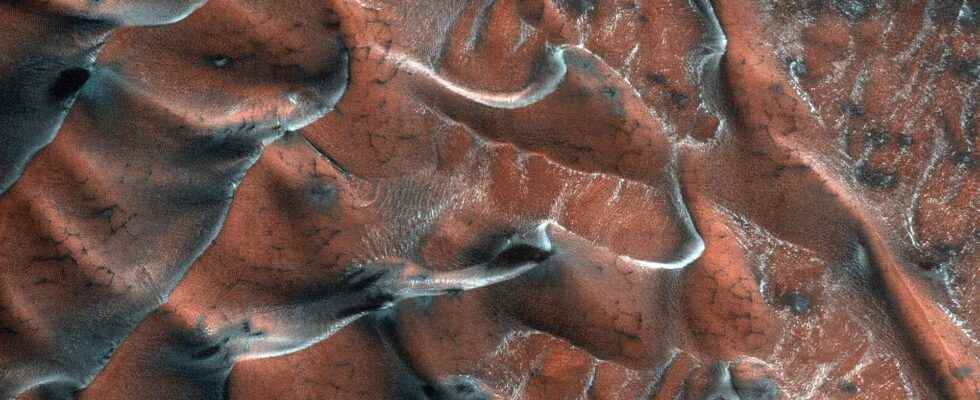The InSight mission was sent to Mars in 2018 with a very specific objective: to probe the interior of the Red Planet. And as surprising as it may seem, it involves, among other things, an analysis of the vibrations induced by the blowing of the winds. Researchers are now offering us, based on these data, a rather detailed map of the Martian subsoil.
You will also be interested
[EN VIDÉO] Mars InSight: a geophysicist on Mars Launched in May 2018 and installed in November on Mars, the InSight lander must explore the less well-known environment of the Red Planet: its subsoil, down to its core. Thanks to sophisticated instruments, including a seismometer and a five-meter drill, he has enough to help us better understand our little neighbor.
Mars, the Red Planet. It intrigues researchers. It makes amateurs dream. And in recent years, a large number of scientific missions have gone to meet him. They flew over it. Have put themselves in orbit around it. Or have landed on its ground. Returning to Earth a quantity of information on theatmosphere or the surface of Mars. But the InSight mission, which landed on the side ofElysium Planitia, a volcanic area located on theequator of the planet, is the first to take a specific interest in its subsoil.
Thanks to his seismometer on-board, the Seis instrument for Seismic Experiment for Interior Structure, InSight has already given scientists an idea of the size and composition of the Red Planet’s core. But also of the nature of its coat and the thickness of its crust. Today, researchers from the Swiss Federal Institute of Technology Zurich (Switzerland) show how, by tracing the reverberations of the sound of the wind on the layers of soil and rocks, they are able to specify what the first two hundred meters of the Martian crust are made of.
The technique they used was developed for quite earthly purposes. In order to study the underground structures of the regions at risk of seismic activity. On our good old Blue planet, indeed, the oceans, but also the windskeep the ground shaking. And those weak jerks that seismologists can measure thanks to their most sensitive instruments constitute like imprints of what goes on in the basement.
Surprising details
On Mars, no oceans. A very thin atmosphere. With little wind, then. And a single measuring station, the InSight mission. Yet the lander records have just revealed some astonishing details of the Martian subsoil, with a resolution one meter near the surface and a few tens of meters deeper.
The mapping established by the researchers reveals an unexpected layer of 30 to 40 meters of sediment. Their origin remains to be determined. This layer is surrounded by thick deposits of wash solidified. All covered with a layer of about three meters regolith sandy. And suggesting that the story ofElysium Planitia could have been more disturbed than the astronomers did not think so until then.
Already, thanks to previous studies on nearby craters, researchers have determined that the lava layers date from around 1.7 billion – in the middle of a rather calm, cold and dry period on Mars – and 3.6 billion in ‘years – during a period of strong volcanic activity. Above the youngest lava layer, just below the surface regolith, is also a rock layer about 15 meters thick. It was probably lifted from the Martian surface by a meteorite impact.
Now, the researchers hope they can apply their technique to explore the subsoil of Mars more deeply. Until the first kilometers of the Martian crust.
Unheard of: Futura launches its very first paper magazine ! A 200-page review, 4 files on Science that will mark 2022.
For this adventure to succeed, Futura needs you. Meeting on Ulule to support the project and participate in its launch. More than ever, let’s make Science accessible to as many people as possible. #LeMagFutura
So, ready to embark on the Mag Futura?
Interested in what you just read?
.
fs3
